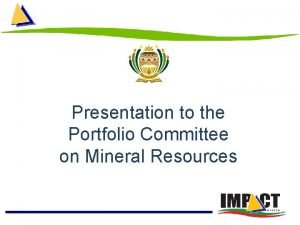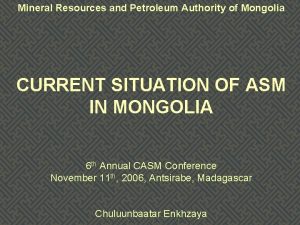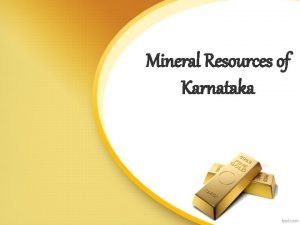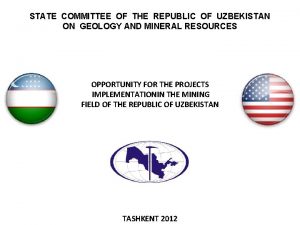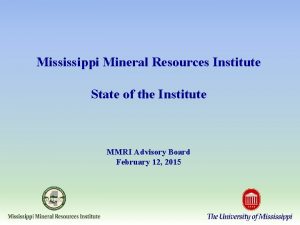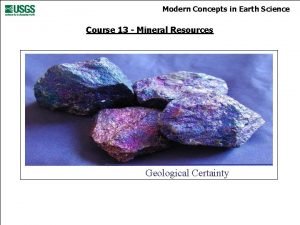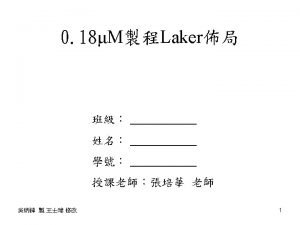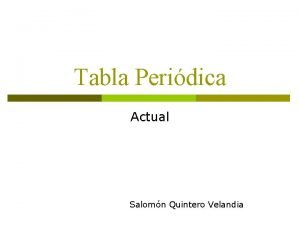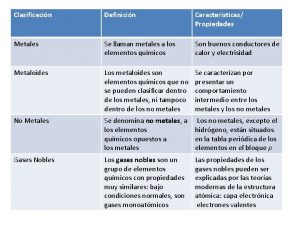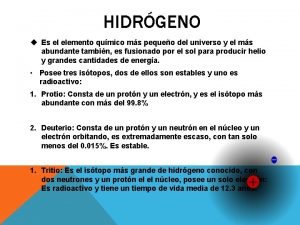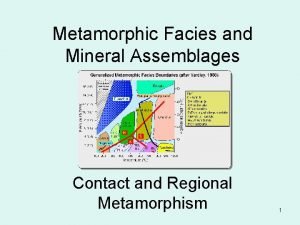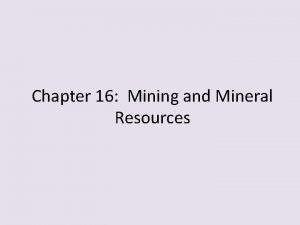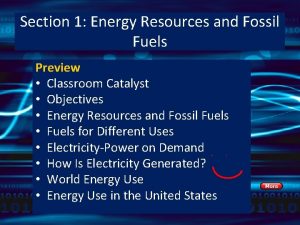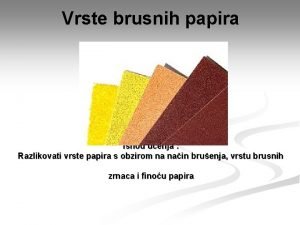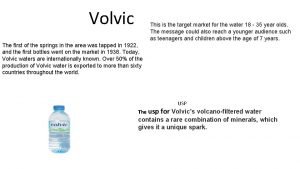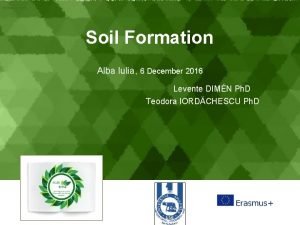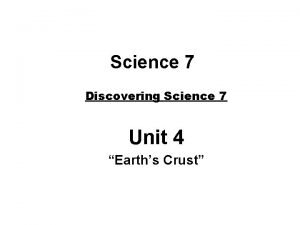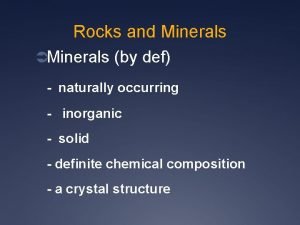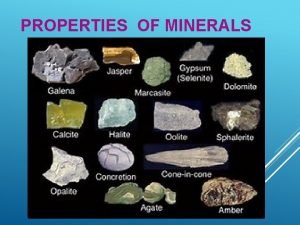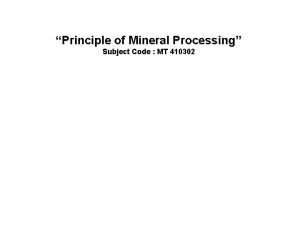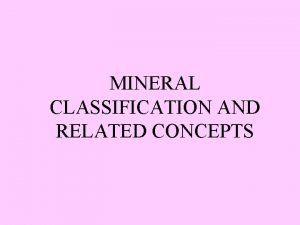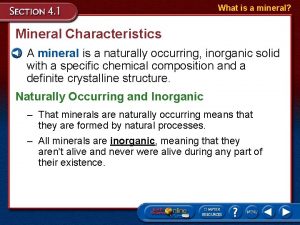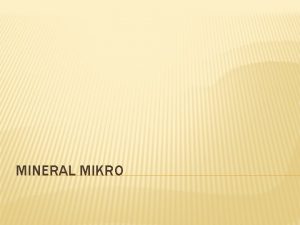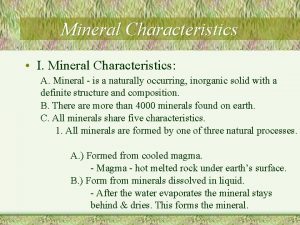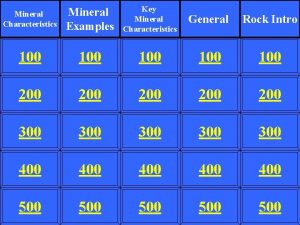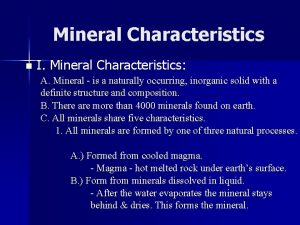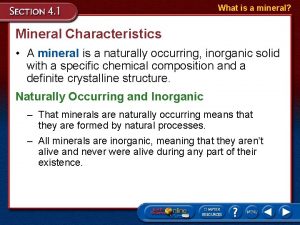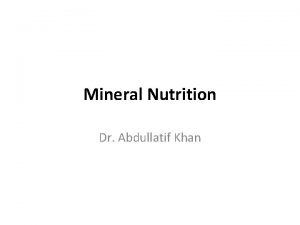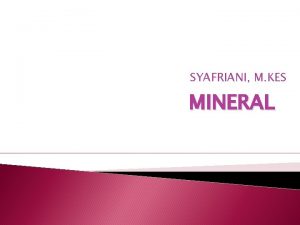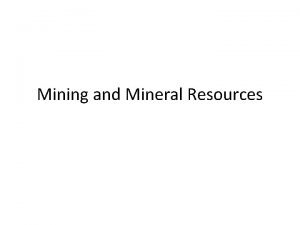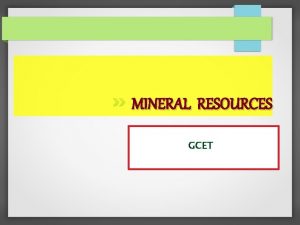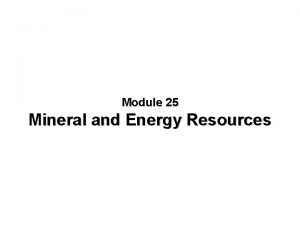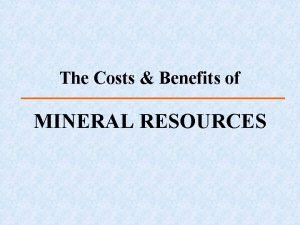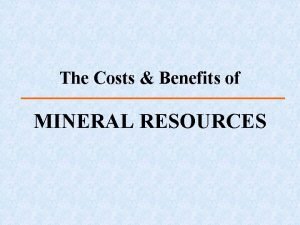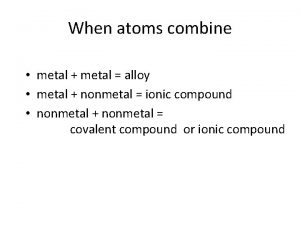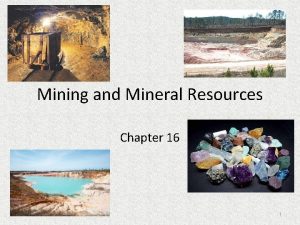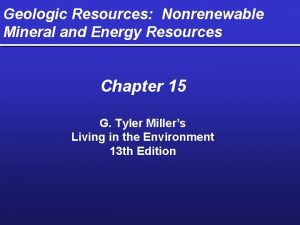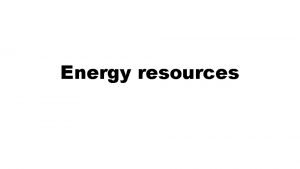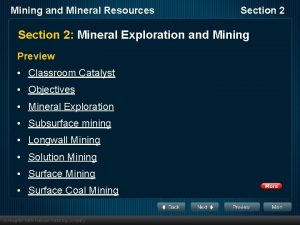Resources and Energy Chapter 7 Mineral Resources Metal








































- Slides: 40

Resources and Energy Chapter 7

Mineral Resources • Metal Ores • Non-metallic minerals • Gems

Metal ores • From cooling magma (Cr, Ni, Pb) – Rock cools, heavy metals settle to bottom • From contact metamorphism (Pb, Cu, Zn) – Heat changes chemical composition to ore • From hydrothermal solutions creating contact metamorphism – Minerals dissolve into solution, solution enters cracks, new minerals form and precipitate out into “veins” • From moving water – Fragments settle out as placer deposits


Minerals and Their Uses Metallic Uses Hematite and Magnetite (iron) making steel Galena (lead) car batteries; solder Gold, silver, platinum electronics; dental; coins; jewelry; utensils; bowls Chalcopyrite (copper) wiring; coins; jewelry; ornaments Sphalerite (zinc) brass; galvanization of steel Non-metallic Uses Diamond (carbon) drills; saws; jewelry Graphite (carbon) pencils; paint; lubricants; batteries Calcite cement; building stone Halite (salt) food preparation; food preservation; de-icers Kaolinite (clay) ceramics; cement; bricks Quartz (sand) glass Sulfur gunpowder; medicines; rubber Gypsum plaster and wallboard


Mining • Removing resources faster than nature can replace them – Subsurface – Surface – Placer – Undersea

Nonrenewable Energy • Used faster than can be replenished or is not likely to be replenished (limited) • Fossil fuels – Formed from remains of living things – Coal – Petroleum – Natural gas – Oil traps (shale)

Coal • Massive plant deposits • Carbonization of peat • Produces methane, carbon dioxide and coal in the absence of oxygen (swamps)

Peat

Lignite (brown coal) in the Dakotas

Strip mining soft coal (80% C) in Wyoming

High grade anthracite

Petroleum • Part of carbon cycle also • Liquid hydrocarbons from converted plant and animal remains • Natural gas = gaseous hydrocarbons • Often found together with water



Oil Shale Impervious rocks like shale trap oil and gas in crests or upwarps of rock layers. A=anticline trap. R=reef trap. S=stratigraphic trap

Nuclear Energy • Fission is the splitting of atoms • Releases tremendous amounts of energy that bind individual atoms together • 1, 000 X stronger than chemical bonds

Power Generation


Fusion Power • Fusion of hydrogen nuclei to form helium • 15 million degrees C • Cold fusion ?

Renewable Energy

Renewable Energy • • • Geothermal Solar Hydropower Biomass Wind

Geothermal • Steam generated from underground heat sources • Advantages? • Disadavantages?


Solar energy • Passive systems – sun room, etc • Advantages/disadvantages?

Solar Energy • Active solar – collectors/photovoltaic cells

Photovoltaic cell

Hydropower • Water moves turbines generating electricity • Advantages/disadvantages?

Sea power, too! Tidal and wave generator

Biomass • Decomposition or processing of organic wastes create substances which may be burned as fuel • E. g. , trees, manure, sawdust, garbage, straw, paper • Advantages/disadvantages

Biomass Generator Waste wood in chip form


Windpower • Moving air moves blades of turbine generating electricity • Advantages/disadvantages? Wind farm


Resources and Conservation • • Weigh options; positive vs. negative Choose cleanest available option Regulate, clean up and reclaim Resources used for more than just energy, so……… • Conserve all resources Uses of minerals in your home



Landfill Operation

 Portfolio committee on mineral resources and energy
Portfolio committee on mineral resources and energy Chapter 13 mineral resources and mining worksheet answers
Chapter 13 mineral resources and mining worksheet answers Sistemang muro-ami
Sistemang muro-ami Mineral resources and petroleum authority of mongolia
Mineral resources and petroleum authority of mongolia Minerals of karnataka
Minerals of karnataka Uzbekistan
Uzbekistan Mississippi mineral resources institute
Mississippi mineral resources institute Placers
Placers Difference between metal oxides and non metal oxides
Difference between metal oxides and non metal oxides Diamond melting point
Diamond melting point Uses of nonmetals
Uses of nonmetals Pure substances on the periodic table
Pure substances on the periodic table Chemical bond def
Chemical bond def Metals and non metals
Metals and non metals Non metals examples
Non metals examples Energy energy transfer and general energy analysis
Energy energy transfer and general energy analysis Energy energy transfer and general energy analysis
Energy energy transfer and general energy analysis Solid liquid gas venn diagram
Solid liquid gas venn diagram Deep nwell
Deep nwell Ionic compounds have
Ionic compounds have Metal no metal y metaloide tabla periodica
Metal no metal y metaloide tabla periodica Propiedades de los metaloides
Propiedades de los metaloides Existen tres isotopos naturales del potasio 39k 40k y 41k
Existen tres isotopos naturales del potasio 39k 40k y 41k Chapter 12 nonrenewable energy resources
Chapter 12 nonrenewable energy resources What is transforming resources
What is transforming resources Fixed and variable resources
Fixed and variable resources Chapter 7 energy conservation of energy
Chapter 7 energy conservation of energy Mineral assemblage
Mineral assemblage Identification test for emulsion
Identification test for emulsion Mineral exploration and mining active reading
Mineral exploration and mining active reading Renewable vs nonrenewable resources worksheet
Renewable vs nonrenewable resources worksheet Deposit
Deposit Dcep welding
Dcep welding Vodobrusni papir granulacije
Vodobrusni papir granulacije Who are the target market for bottled water
Who are the target market for bottled water Showeet
Showeet Discovering science 7
Discovering science 7 Naturally occurring mineral
Naturally occurring mineral Properties of mineral
Properties of mineral 2 product formula mineral processing
2 product formula mineral processing Resemisasi
Resemisasi
